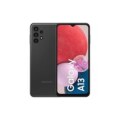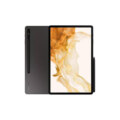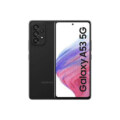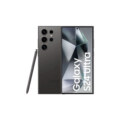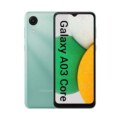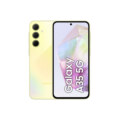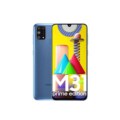Samsung Galaxy Tab S8
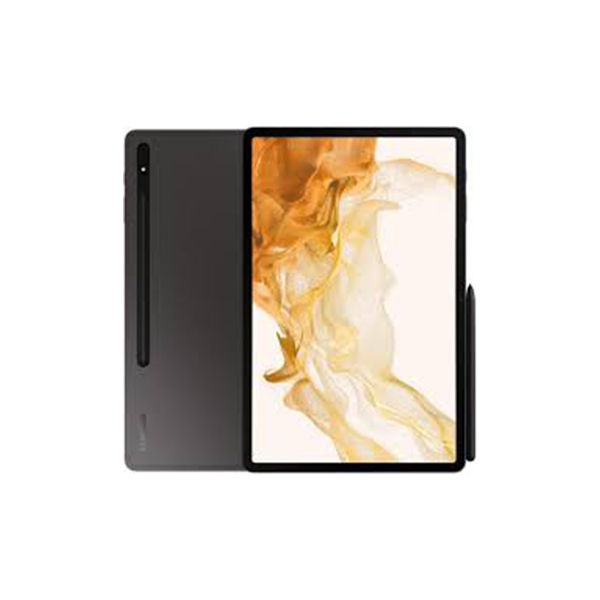

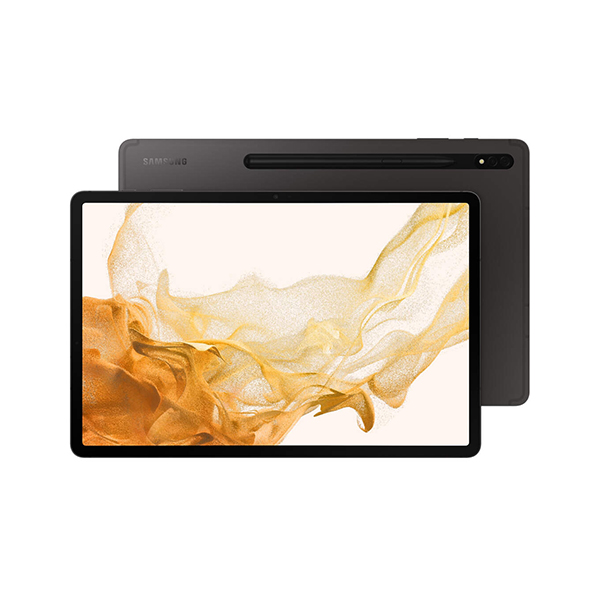
Specs
General
| Device Type | Samsung Tab |
| Model | Galaxy Tab S8 |
| Announced | 22 February, 2022 |
| Status | Available |
Design
| Dimensions | 253.8 x 165.3 x 6.3 mm |
| Weight | 503 g (Wi-Fi), 507 g (5G) |
| Protection | Corning Gorilla Glass 5 |
| Colors |
Graphite Silver Pink Gold |
Display
| Refresh Rate | 120 Hz |
| Display Type Display Technology => A number of display technologies and types used in mobile phones => TFT (Thin Film Transistor), IPS (In-Place Switching), OLED (Organic Light Emitting Diode), AMOLED (Active-Matrix Organic Light-Emitting Diode), Super AMOLED (an even advanced version of AMOLED), Resistive Touchscreen (Resistive touchscreens contain two layer of conductive material with a very small gap between them which acts as a resistance), Capacitive Touchsceen (Capacitive touchscreen technology consists of a layer of glass coated with a transparent conductor) | TFT LCD |
| Size | 11.0 inches |
| Resolution | 1600 x 2560 pixels |
| Pixel Density Pixel Density (PPI) is refers to the concentration of pixels on a particular display, measured in pixels per inch (ppi). Pixel density is calculated by dividing the diagonal pixel resolution of a display by its diagonal size, higher pixel density better display quality. | ~ 274 ppi |
| Touch Screen | Capacitive Touchscreen, Multi-touch |
| Display Protection Display Protection => Gorilla Glass is a special alkali-aluminosilicate glass shield with exceptional damage resistance that helps protect mobile displays from scratches, drops, and bumps of everyday use, It is always better to go for a smartphone with Gorilla Glass for that added protection and peace of mind. | Corning Gorilla Glass 5 |
| Secondary Display | No |
Camera
| Front Camera | 12 MP |
| Camera Setup | Double |
| Main Camera Camera is able to capture photographs and usually videos, The most important characteristics of a camera are the resolution (measured in megapixels), lens focus type (fixed or automatic), higher megapixel cameras are known to capture higher quality photos, but not always a good measurement of the photos quality. |
13 MP, f/2.0, 26mm (wide) 6 MP, f/2.2, (ultrawide) |
| Image | 4128 x 3096 Pixels |
| Video | 4K@30/60fps, 1080p@30fps |
| Camera Features | HDR, panorama |
| Flash Flash Light => There is commonly two types of flash lights are used in camera mobile phones, LED Flash (LED flash offers lower power consumption with drive circuitry that takes up very little room, LEDs can be strobed faster than any other light source), Xenon Flash (xenon flash produces an extremely intense full-spectrum white light for a very short duration) | LED flash |
Hardware
| Operating System OS => Every computer system run on a base software called Operating System (OS). Operating System controls all basic operations of the computer (such as smartphone, PDAs, tablet computers and other handheld devices). The Operating System allows the user to install and run third party applications (apps), apps are used to add new functionality to the device. | Android 12 |
| Chipset Chipset is a group of integrated circuits designed to perform one or a more dedicated functions, often with real time computing constraints, Popular smartphones are equipped with more advanced embedded chipsets that can do many different tasks depending on their programming. | Qualcomm Snapdragon 8 Gen 1 |
| CPU CPU (Central Processing Unit) mostly known as processors, CPU processes instructions in order to carry out certain functions that make your device operate properly. Processors are often described as the brain of computers, smartphones and tablets, Smartphones and tablets rely on processors to carry out their every task, Processors are an incredibly important factor in selecting any type of computing device, including your smartphone. | Octa-core (1x3.00 GHz Cortex-X2 & 3x2.50 GHz Cortex-A710 & 4x1.80 GHz Cortex-A510) |
| Architecture | 64 bit |
| Fabrication | 4 nm |
| GPU GPU (Graphics Processing Unit) is a single-chip processor designed to rapidly manipulate and alter memory to accelerate the creation of images in a frame buffer intended for output to a display, This includes things such as lighting effects, object transformations, and 3D motion. | Adreno 730 |
| RAM (Memory) RAM (Random Access Memory) is a type of computer memory that can be accessed randomly, any byte of memory can be accessed without touching the preceding bytes that allows information to be stored and accessed quickly from random locations. RAM is the most common type of memory found in computer systems, smartphones, tablets and other electronic devices. | 8 GB |
| Internal Storage Internal Storage is a data storage space (flash memory) mostly used in smartphones, tablets and other electronic devices where operating system, apps, music, photos, videos, files and other user data Is stored. | 128GB / 256GB Built-in |
| Card Slot Memory Card Slot is a special slot for inserting a memory card. Memory cards allow you to expand the phone's built-in memory, A memory card (sometimes called a flash memory card or a storage card) is a small storage medium used to store data such as text, pictures, audio, and video, for use on small, portable or remote computing devices such as mobile phones, mp3 players, digital cameras. | |
| Sensors Sensors are electronic components that detects and responds to some type of input from the physical environment. The specific input could be light, heat, motion, moisture, pressure and location, The output is generally a signal that is converted to use in computing systems, a location sensor, such as a GPS receiver is able to detect current location of your electronic device. | Fingerprint (side-mounted), accelerometer, gyro, proximity, compass |
Network
| SIM TYPE SIM (Subscriber Identity Module) is a small card that contains mobile network subscriber's account information. This allows the phone using the card to attach to a mobile network. The SIM card is most commonly associated with GSM and UMTS mobile networks. Moving a SIM card from one phone to another allows a subscriber to switch mobile phones without having to contact their mobile network carrier. SIM cards can also be used by a phone to store limited amounts of data, such as phone numbers and text messages. | Nano SIM |
| SIM Technology | Nano-SIM |
| 2G Network | GSM 850 / 900 / 1800 / 1900 |
| 3G Network | HSDPA 850 / 900 / 1700(AWS) / 1900 / 2100 |
| 4G Network |
LTE |
| 5G Network | SA/NSA/Sub6 |
Multimedia
| FM Radio | |
| Stereo Speakers | YES |
| Loudspeaker | YES |
| Audio Jack | NO |
| Audio Features | Tuned by AKG |
Connectivity
| Wi-fi Wi-Fi is a popular wireless networking technology using radio waves to provide high-speed network connections that allows devices to communicate without cords or cables, Wi-Fi is increasingly becoming the preferred mode of internet connectivity all over the world. | Wi-Fi 802.11 a/b/g/n/ac/6e, dual-band, Wi-Fi Direct |
| Bluetooth Bluetooth is a wireless communications technology for exchanging data between mobile phones, headsets, computers and other network devices over short distances without wires, Bluetooth technology was primarily designed to support simple wireless networking of personal consumer devices. | 5.2, A2DP, LE |
| GPS GPS The Global Positioning System is a satellite-based radio navigation system, GPS permits users to determine their position, velocity and the time 24 hours a day, in all weather, anywhere in the world, In order to locate your position, your device or GPS receiver must have a clear view of the sky. | GPS, GLONASS, BDS, GALILEO |
| USB | USB Type-C 3.2, magnetic connector |
| EDGE EDGE (Enhanced Data GSM Environment) is a wireless network technology generally considered the next step in the 2G network offers data transfer rates up to four times faster than ordinary GSM networks, Generally, EDGE is used for the purpose of wireless data transfer, such as sharing pictures and videos or browsing the Internet via a mobile phone connection. | |
| GPRS GPRS (General Packet Radio Service) is a packet oriented mobile data service on the 2G and 3G cellular communication system's global system for mobile communications (GSM), Generally, GPRS is used for the purpose of wireless data transfer, such as sharing pictures and videos or browsing the Internet via a mobile phone connection. | |
| Speed | 3G HSPA 4G LTE, 5G |
| Wi-fi Hotspot | |
| NFC NFC (Near field communication) is a set of standards for smartphones and similar devices to establish peer-to-peer radio communications with each other by touching them together or bringing them into proximity, usually no more than a few inches. |
Features
| Messaging | SMS(threaded view), MMS, Email, Push Mail, IM |
| Web Browser Web Browser => a web browser is a software application used to locate, retrieve and display content on the World Wide Web, including Web pages, images, video and other files, The primary function of a web browser is to render HTML, the code used to design or markup webpages. | HTML5 |
| Games | Built-in + Downloadable |
| Torch |
Battery
| Battery Type Battery Type => Cell phones run on various kinds of batteries depending on the manufacturer, phone size or shape and features. There are basically four types of cell phone batteries => Lithium Polymer, Lithium Ion, Nickel Metal Hydride and Nickel Cadmium. | Li-Po |
| Capacity Battery Capacity is a measure (typically in Amp-hr) of the charge stored by the battery, and is determined by the mass of active material contained in the battery. The battery capacity represents the maximum amount of energy that can be extracted from the battery under certain conditions. | 8000 mAh |
| Placement | Non-removable |
| Wireless Charging Wireless Charging (Inductive Charging) uses an electromagnetic field to transfer energy between two objects. This is usually done with a charging station. Energy is sent through an inductive coupling to an electrical device, which can then use that energy to charge batteries or run the device. | No |
| Extra | 45W wired, 100% in 80 min (advertised) |
Samsung Galaxy Tab S8: A Complete Review
The Samsung Galaxy Tab S8 series, released in early 2022, has raised the bar for Android tablets with impressive design, powerful specs, and multitasking capabilities. With the Galaxy Tab S8 series, Samsung Galaxy Tab S8 offers a solid choice for productivity, entertainment, and creative use.
In this blog, we’ll dive into every detail of the Galaxy Tab S8: its design, display, performance, camera, battery life, software, and pros and cons to give you a thorough understanding of what this tablet offers.
1. Design
The Galaxy Tab S8 offers a minimalist yet premium design that feels both durable and refined. With an aluminum unibody construction, the tablet feels sturdy in hand, and at 6.3 mm thick and about 503 grams, it’s incredibly lightweight for its size.
The Galaxy Tab S8 comes in two colors—Graphite and Silver—both of which provide a sleek, professional look. The rear has a magnetic strip for the S Pen attachment, and the edges are squared off, giving it a modern, flat-edge style reminiscent of the latest iPads. This design choice also makes it comfortable to hold for extended periods.
Key Design Features:
- Slim, lightweight aluminum build
- Magnetic strip for S Pen attachment
- Dual speakers on each side for a balanced sound experience
2. Display
The Galaxy Tab S8 features an 11-inch LCD with a 2560 x 1600-pixel resolution, supporting a smooth 120Hz refresh rate. While it doesn’t use Samsung’s signature Super AMOLED, the LCD still delivers excellent clarity, brightness, and vibrant colors. The 120Hz refresh rate allows for smoother animations and a more responsive experience, especially while browsing and gaming.
For users who prioritize a display with richer blacks and more intense colors, the Galaxy Tab S8+ and Tab S8 Ultra models feature AMOLED displays, though at a higher price point.
Display Highlights:
- 11-inch LCD with 2560 x 1600 resolution
- 120Hz refresh rate for smoother visuals
- Rich color reproduction, great for media consumption
3. Performance
Powered by the Qualcomm Snapdragon 8 Gen 1 processor, the Galaxy Tab S8 is incredibly powerful, providing smooth multitasking and excellent performance for both casual and demanding applications. Paired with 8GB of RAM (with a 12GB option for higher-end models), it’s ideal for those looking to switch between apps seamlessly, work with large files, and even play intensive mobile games.
Whether you’re editing photos, sketching with the S Pen, or running multiple apps in split-screen, the Galaxy Tab S8 can handle it smoothly. The tablet also supports 5G connectivity, which is great for users looking to stay connected on the go without relying solely on Wi-Fi.
Performance Features:
- Qualcomm Snapdragon 8 Gen 1 processor
- 8GB RAM (with options for higher-end configurations)
- 5G support for connectivity on the go
4. Camera
The Galaxy Tab S8 comes with a dual rear camera setup: a 13MP primary camera and a 6MP ultra-wide lens. It also has a 12MP ultra-wide front camera, which is ideal for video calls and capturing wide-angle selfies. The camera quality is decent for a tablet and suitable for casual photography, scanning documents, and video calls. Samsung Galaxy Tab S8 camera software enhances the experience by providing useful modes like portrait, night, and pro modes.
The tablet also has Auto Framing, a feature that keeps you centered during video calls even if you move around.
Camera Features:
- 13MP primary + 6MP ultra-wide rear cameras
- 12MP ultra-wide front camera
- Auto Framing feature for video calls
5. Battery Life
With an 8,000mAh battery, the Galaxy Tab S8 can easily last through a full day of moderate usage. It supports 45W fast charging, allowing the tablet to reach 100% in about 80 minutes when using a compatible charger, though this charger is sold separately. The battery life may vary with high-brightness settings or heavy use, but it generally performs well, especially with Samsung’s optimizations.
Battery Highlights:
- 8,000mAh battery capacity
- Supports 45W fast charging
- Long-lasting battery for all-day use with balanced settings
6. Software
The Galaxy Tab S8 runs on Samsung’s One UI 4.1 based on Android 12. Samsung Galaxy Tab S8 One UI is known for its clean, user-friendly interface and adds several tablet-optimized features like multi-window support, edge panels, and DeX mode, which turns your tablet into a desktop-like experience when connected to a keyboard or external display.
The S Pen, included in the box, is incredibly responsive and makes it easy to take notes, draw, and navigate. Samsung Galaxy Tab S8 has incorporated advanced S Pen features, like air actions and handwriting-to-text, making it a great tool for creatives and note-takers.
Software Highlights:
- Runs One UI 4.1 based on Android 12
- DeX mode for a desktop-like experience
- Advanced S Pen features for creative and productive use
Pros and Cons
Pros:
- Premium Design: Slim and lightweight with an aluminum build.
- High Performance: Snapdragon 8 Gen 1 and 8GB RAM make it fast and responsive.
- 120Hz Display: Smooth and vibrant 11-inch LCD.
- S Pen Included: Great for note-taking and creative work.
- Samsung DeX Support: Turns the tablet into a desktop environment.
- Long Battery Life: 8,000mAh battery with fast charging support.
Cons:
- No AMOLED Display: Some users may prefer AMOLED over the LCD.
- Fast Charger Not Included: 45W charger needs to be purchased separately.
- Expensive: High-end features come at a premium cost.

Conclusion
The Samsung Galaxy Tab S8 offers a premium Android tablet experience with its powerful specs, productivity features, and solid build quality. While the lack of an AMOLED display may be a minor drawback, the LCD performs admirably with sharpness and color accuracy. The S Pen and Samsung DeX support make it a versatile choice for users who want a tablet that’s just as good for work as it is for play.
If you’re an Android user seeking a capable tablet that can handle multitasking, creative tasks, and more, the Galaxy Tab S8 is certainly worth considering.
Review
Disclaimer Note
All prices in Pakistan is updated daily from the price list provided by local shops and dealers but we can not guarantee that the information / price on this page is 100% correct (Human error is possible), always visit your local shop for exact cell phone cost & rate.
